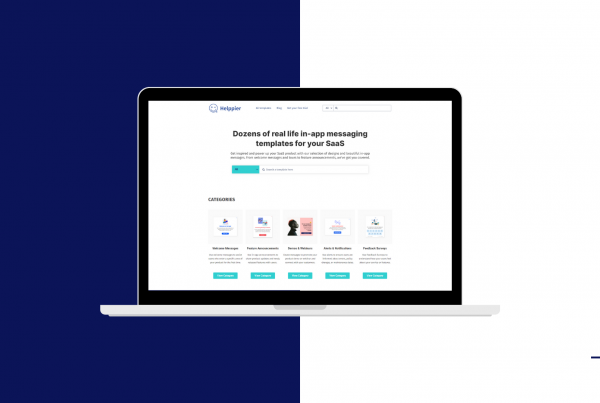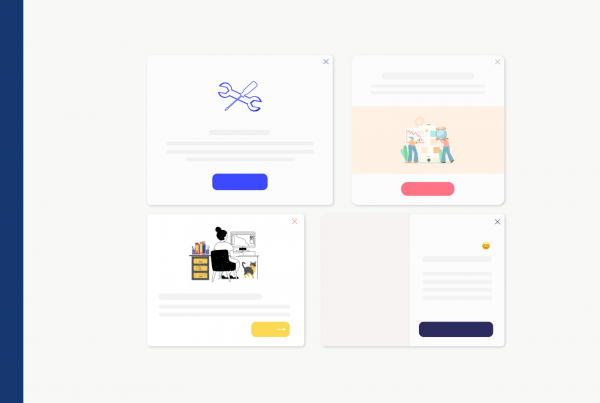The year 2020 marks a significant shift in remote work. Here are some remote onboarding tips for your company.
Whether you’re just testing the waters of teleworking or your employees have been commuting to their at-home desks for several years, it’s important for any growing business to question if they have the onboarding infrastructure necessary to integrate full-time remote talent.
The year 2020 marks a significant shift in the remote work landscape. Already, 44% of employees state some members of their team, work remotely at full-time capacity, and that number is only expected to multiply as businesses quickly adopt social distancing and employee isolation practices.
Requiring remote new-hires to spend their first few weeks training on-site is becoming less of an expectation, particularly for organizations enlisting talent on a global scale. But without this opportunity to connect with full-time remote workers in person, these organizations are tasked with performing training courses, highlighting work culture, and charting employee performance all through a screen.
To help you build a successful remote onboarding program, here are a few strategies to keep in mind.
✨ Preboard with digital employer branding
Preboarding, or the time between a candidate accepting your job offer and their first day on the job, is a crucial (and volatile) stage in the employee lifecycle. Your candidate could be waiting to hear back from their other offers on the table, or they might be highly critical of any missteps your hiring team takes. Regardless, preboarding is when most candidates develop their first impressions of what it would feel like to actually work for your company, which makes the preboarding process highly correlative to your ability to retain employees long-term.
However, remote employees may never get the same opportunities to develop their first impressions as applicants who are able to interview in-person, get a tour of the office and receive a few branded items of company merch. There are some aspects of a fully digital hiring experience that cannot emulate the energy of your office, conversations around the water cooler, or your overall approach to work.
That’s where developing an authentic employer brand and voice online comes into play. Digital employer branding gives remote talent in your hiring pipeline a glimpse into what makes your organization different from the competition. Company social media accounts, for instance, are an ideal platform for sharing stories about employee experiences and extracurriculars outside of the office. Alternatively, blogs and long-form content give you an avenue for sharing customer case-studies or specific examples of the value your business offers. Whenever possible, you can also check on your workplace reviews from former and current employees, as they can highly inform job seekers on their decision to work for your company.
✨ Develop an off-site onboarding toolkit
Simply put, the needs of your remote workforce will differ from the needs of your on-site employees. Technology is the off-site colleague’s sole connection to the rest of their team, and their ability to work effectively from their home may be wholly contingent on having the right equipment.
Remote onboarding requires that new employees not only have the tools they need to perform their day-to-day responsibilities but also that they are able to learn their roles, review company policies and garner any necessary certifications before jumping into client work. Here are a few essential items to consider when filling your remote new-hire toolbox:
For staff training 🚀
Pair your traditional learning practices with remote-friendly tools like tutorial video software. Compared to a static presentation or long-form training document, tutorial videos allow employees to fully immerse themselves in a topic, which is particularly useful as they learn a particular internal system your organization uses.
For collaboration 👩💼
Sharing important information and resources with new employees remotely is a challenge. Centralizing all information regarding processes or internal procedures online will help new hires find the information they need to get things done and learn about our company. A knowledge management portal, for example, keeps all your information updated in real-time and allows leaving important notes for your employees at the same time. In addition, new hires can comment and leave feedback about a specific subject.
For communication 📱
Enlist the aid of audio- and video-capable communication channels. Video conferencing technology is a great example of a service that allows you to express themselves through speaking cues (tone of voice, laughter, word choice) as well as visual ones (facial expression, posture, hand gestures). This helps ensure that remote trainers are able to convey the nuance of job expectations and best practices.
For team-building 🤝
Make sure that on- and off-site employees alike have installed a chat messaging platform. When personal conversations with desk mates aren’t an option, informal communication channels provide those undergoing off-site onboarding a designated place for asking training-related questions and developing personal connections with their team members.
For visualizing work 👁️
Supplement your training workshops with visual aids like an online whiteboard solution, which enables onboarding facilitators to share difficult concepts by drawing on a digitized whiteboard. These types of tools encourage participation from your remote trainees, as they are allowed to add their own thoughts, sketches, and brainstorm ideas into the mix.
✨ Assign a fellow remote mentor (or two)
Mentorship programs provide two primary benefits during the virtual onboarding process. First, they encourage new hires to develop relationships with the seasoned veterans of your company, which can accelerate their own journey toward job proficiency. Secondly, mentors help establish a personal, human connection for remote workers, who rarely or never see their coworkers’ faces.
Assigning new hires to a designated mentor is conventional practice in many onboarding programs, but for off-site employees, who may have few other chances to connect with people outside of their department, mentorship may extend beyond a two-person relationship. So long as your current employees have the time necessary to mentor new additions to the team, you can create a network of professional relationships.
The most obvious choice is a senior member of the remote new hire’s team — someone who can guide them through the day-to-day expectations of the job and answer any work-related questions they have throughout the day. But it may also be valuable to connect with remote employees in other departments to garner their recommendations for successful work from home. Connecting executive-level or management-level mentors with remote mentees can help your onboarding participants feel even more comfortable within your organization and help them work toward big-picture career goals and personal growth.
Remote work is here to stay 🏠
According to research, by the year 2028, 73% of all teams will have remote workers!
And, as an employer, you not only need to ensure employees have the necessary resources to perform tasks, but also transition obsolete processes to the online. Keeping employees engaged in your company’s culture when working from home, depends entirely on using the right tools and onboarding practices.
In this article, we mentioned a few remote onboarding tips that you can use. From using tutorial videos for staff training to boosting your digital employer branding, your team’s success relies heavily on online channels to succeed.




